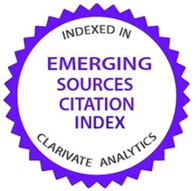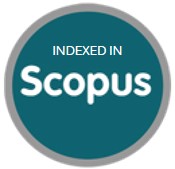Hezbolá como delegado iraní y su progresiva expansión en América Latina
DOI:
https://doi.org/10.21830/19006586.1277Palabras clave:
América Latina, guerra híbrida, Hezbolá, Irán, proxy, seguridad, terrorismoResumen
Este artículo analiza el papel de Hezbolá como actor proxy en la guerra hibrida iraní y sus implicaciones para la seguridad en América Latina, a partir de antecedentes históricos relevantes. Primero se explica el vínculo entre Irán y Hezbolá desde sus orígenes en la Guerra Civil libanesa, para luego abordar la presencia de esta organización en América Latina. Aunque esta región no es un área de operaciones armadas para Hezbolá, sí se revela como un escenario clave para su financiación, expansión y proyección estratégica. Ha habido presencia en la Triple Frontera entre Argentina, Brasil y Paraguay desde tiempo atrás, que ha influido en ataques terroristas dirigidos a objetivos judíos e israelíes. Ahora ha ganado importancia estratégica la triple frontera entre Colombia, Panamá y Venezuela, por la asociación y cooperación criminal con diversas estructuras armadas locales.
Descargas
Referencias bibliográficas
Akerman, Y. (2023, 29 de octubre). La operación de Hezbolá en Colombia. Cambio. https://bit.ly/3T0Sgy9
Azani, E., & Karmon, E. (2018). El papel de Hezbollah en el conflicto actual entre Irán e Israel [documento de opinión, 89]. Instituto Español de Estudios Estratégicos. https://tinyurl.com/3ct9ut8d
Bargués, P., & Bourekba, M. (2022). Wars by all means: The rise of hybrid warfare (CIDOB Report, 8). https://tinyurl.com/3e9c6mkz
Bassedas, M. (2009). Hezbollah’s identities and their relevance for cultural and religious IR (ICIP - Working Papers 2009/4). https://dx.doi.org/10.2139/ssrn.1884127
BBC. (2018, 22 de mayo). Panama says new evidence shows 1994 plane crash ‘terrorist’ incident. https://www.bbc.com/news/world-latin-america-44207991
Biddle, S. (2011). Non state warfare: The military methods of guerrillas, warlords, and militias. Princeton University Press.
Byman, D., & McCaleb, E. (2023, 31 de julio). Understanding Hamas’s and Hezbollah’s uses of information technology. Center for Strategic & International Studies.
Caforio, G. (2012). The concreteness of asymmetric war: Fragments of experience. Connections, 11(3), 21-40. https://bit.ly/3mrJU6b
Capdevilla, C. (2022). Guerra híbrida: las nuevas tecnologías como instrumento de guerra. Revista CEERI Global, 1(2), 59-75. https://tinyurl.com/yus77b8z
Cardozo, A., & Niño, C. (2023). Irán y Venezuela: del realismo periférico a la diplomacia resiliente (1999-2023). Revista Relaciones Internacionales, 1(96), 165-189. https://doi.org/10.15359/ri.96-1.6
Caro, I. (2002). Fundamentalismos islámicos: guerra contra Occidente y América Latina. Editorial Suramericana.
Caro, I. (2011). Presencia de movimientos chiítas en América Latina; su relación con los atentados de Buenos Aires (1992, 1994) y con el eje Caracas-Teherán. Latin American Research Review, 46(1), 177-193. https://bit.ly/4c0nyOE
Clarke, C., & Smyth, P. (2017). The implications of Iran’s expanding Shi’a foreign fighter network. CTC Sentinel, 10(10), 14-17. https://bit.ly/3ZmdkBe
Cordesman, A., Sullivan, G., & Sullivan, W. (2007). Lessons of the 2006 Israeli-Hezbollah War. Center for Strategic and International Studies.
Cornago, N. (2018). Paradiplomacy and protodiplomacy. En The encyclopedia of diplomacy. John Wiley & Sons. https://doi.org/10.1002/9781118885154.dipl0211
DeVore, M., & Stähli, A. (2015). Explaining Hezbollah’s effectiveness: Internal and external determinants of the rise of violent non-State actors. Terrorism and Political Violence, 27(2), 331-357. https://doi.org/10.1080/09546553.2013.808194
DIMAR. (2022, mayo). Informe de Inteligencia Portuaria. Dirección General Marítima. https://bit.ly/49QlV4F
Dumitrascu, A. (2016). El radicalismo islámico en América Latina. De Hezbolá al Daesh. Boletín IEEE bie3, 4, 1-13. https://dialnet.unirioja.es/servlet/articulo?codigo=6029292
El-Husseini, R. (2010). Hezbollah and the axis of Refusal: Hamas, Iran and Syria. Third World Quarterly, 31(5), 803-815.
Ezzedine, N., & Azizi, H. (2022, 14 de julio). Iran’s increasingly decentralized axis of resistance. Texas National Security Review. https://bit.ly/3YpvTmE
Ferrer, R. (2023, 13 de abril). Caso Hamdar/Hezbollah: el cuidado de las formas impidió que Perú vuelva a la vanguardia contra el terrorismo. Infobae. https://bit.ly/4c2lEgr
Garrison, C. (2019, 18 de julio). Argentina designa a Hezbollah como organización terrorista, ordena congelar activos. Reuters. https://reut.rs/3TjF2Oo
Gunneriusson, H. (2021). Hybrid warfare: Development, historical context, challenges and interpretations. Icono 14. Revista de Comunicación y Tecnologías Emergentes, 19(1), 15-37. https://doi.org/10.7195/ri14.v19i1.1608
Hoffman, F. (2007). Conflict in the 21st century: The rise of hybrid wars. Potomac Institute for Policy Studies.
Humire, J. M. (2020). Hezbollah’s support network in Venezuela and ties to the Maduro regime. En The Maduro-Hezbollah Nexus: How Iran-backed Networks Prop up the Venezuelan Regime (pp. 5-10). Atlantic Council. http://www.jstor.org/stable/resrep29477.5
Jones, M., & Bachmann, S. (2021). Syria: A hybrid war case study. Journal of Military and Strategic Studies, 21(3), 33-55. https://ssrn.com/abstract=3939659
Kramer, M. (1998). Origins of terrorism. Psychologies, ideologies, theologies, states of mind. En W. Reich (Ed.), The moral logic of Hizballah (pp. 131-157). Woodrow Wilson Center Press.
Kuznetsov, A. (2015). Theory and practice of paradiplomacy: Subnational governments in international affairs. En C. Bjola & M. Kornprobst (Eds.), Routledge new diplomacy studies. Routledge; Taylor & Francis Group.
Lieberman, E. (2012). The Israel-Hezbollah rivalry. En Reconceptualizing deterrence: Nudging toward rationality in Middle Eastern rivalries (pp. 172-210). Routledge.
Marcus, R. (2018). Israel’s long war with Hezbollah: Military innovation and adaptation under fire. Georgetown University Press.
Marín-Jiménez, I., Astudillo, C., & Knudson, A. (2022). Criminalidad e ingobernabilidad en la triple frontera. Flacso.
Mockaitis, T. (1995). British counterinsurgency in the post-imperial era. Manchester University Press.
Mumford, A., & Carlucci, P. (2023). Hybrid warfare: The continuation of ambiguity by other means. European Journal of International Security, 8, 192-206.
Najžer, B. (2020). The hybrid age: International security in the era of hybrid warfare. I. B. Tauris.
Neriah, J., & Shapira, S. (2012). Hezbollah: Profile of a terrorist organization. Friends of Israel Initiative.
Neumann, V. (2011). The new nexus of narcoterrorism: Hezbollah and Venezuela. Foreign Policy Research Institute.
Niño, C., & Palma-Álvarez, D. (2021). Diplomacia terrorista del Estado Islámico en Trinidad y Tobago. Aproximación desde la geometría del terrorismo. Revista Científica General José María Córdova, 19(33), 75-90. https://doi.org/10.21830/19006586.657
Noriega, R. F., & Cárdenas, J. R. (2011). La creciente amenaza de Hezbollah en América Latina. American Enterprise Institute. http://www.jstor.org/stable/resrep03113
Ottolenghi, E. (2023, 28 de octubre). Hezbollah’s terror threat in Latin America. Foundation for Defense of Democracies.
Perliger, A., & Palmieri, M. (2019). Mapping connections and cooperation between terrorist and criminal entities. Studies in Conflict and Terrorism, 45(5-6), 335-347. https://doi.org/10.1080/1057610X.2019.1678874
Raychev, Y. (2022). Guerras híbridas como un nuevo desafío para la seguridad de los estados de la UE y la OTAN (2010-2020). Universidad de Granada.
Rivas, O. (2023, 18 de abril). Terrorismo en aguas del Caribe: la peligrosa triple frontera de Hezbolá. Panam Post. https://bit.ly/4bQXNjw
Rodríguez, A., Puente, M., y Trejos, L. (2018). Análisis de la frontera Colombia-Venezuela. Universidad del Norte.
Rodríguez, E., Morales, R., Crescente, D., Cabello, M., & Paz, I. (2023). La inteligencia artificial en la guerra híbrida como arma de desinformación (Documento de Opinión 61). Instituto Español de Estudios Estratégicos. https://bit.ly/3wzygv7
Rubin, U. (2006). Hizballa’s rocket campaign against Northern Israel: A preliminary report. Jerusalem Issue Brief, 6(10). https://www.jcpa.org/brief/brief006-10.htm
Rudner, M. (2010). Hizbullah terrorism finance: Fund-raisingand money-laundering. Studies in Conflict & Terrorism, 33, 700-715. http://dx.doi.org/10.1080/1057610X.2010.494169
Schorr, E. J. (2013). Hezbollah & Iran in Latin America. A threat just beneath the surface. International Institute for Counter-Terrorism (ICT). http://www.jstor.org/stable/resrep09433
Seelke, C. R. (2020, 21 de febrero). Venezuela: Overview of U.S. sanctions (In Focus Report 10715). Congressional Research Service. https://crsreports.congress.gov/product/pdf/IF/IF10715/29
Shaikh, S., & Williams, I. (2018, 5 de julio). Hezbollah’s missiles and rockets [reporte]. Center for Strategic and International Studies. https://www.csis.org/analysis/hezbollahs-missiles-and-rockets
Solmaz, T. (2022). ‘Hybrid warfare’: One term, many meanings. Small Wars Journal. https://bit.ly/3TjN7CI
UNODC. (2022). Sistema Integrado de Monitoreo de Cultivos Ilícitos-SIMCI. https://www.unodc.org/colombia/es/simci/simci.html
Vasiliauskiené, V., & Stumbrys, V. (2023). Problematic aspects of the legal definition of hybrid warfare. Public Security and Public Order, 33, 142-153. https://www.lituanistika.lt/content/103724
Washington Institute. (2023). Hezbollah Worldwide Activity [mapa interactivo]. https://tinyurl.com/5fkwcddu
Williamson, M., & Mansoor, P. (2012). Hybrid warfare: Fighting complex opponents from the ancient world to the present. Cambridge University Press.
Zandee, D., & Adája, S. (2023). Countering hybrid threads. The role of joint expeditionary force. Netherland Institute of International Relations.
Descargas
Publicado
Cómo citar
Número
Sección
Licencia
Derechos de autor 2024 Revista Científica General José María Córdova

Esta obra está bajo una licencia internacional Creative Commons Atribución-NoComercial-SinDerivadas 4.0.

| Estadísticas de artículo | |
|---|---|
| Vistas de resúmenes | |
| Vistas de PDF | |
| Descargas de PDF | |
| Vistas de HTML | |
| Otras vistas | |
























